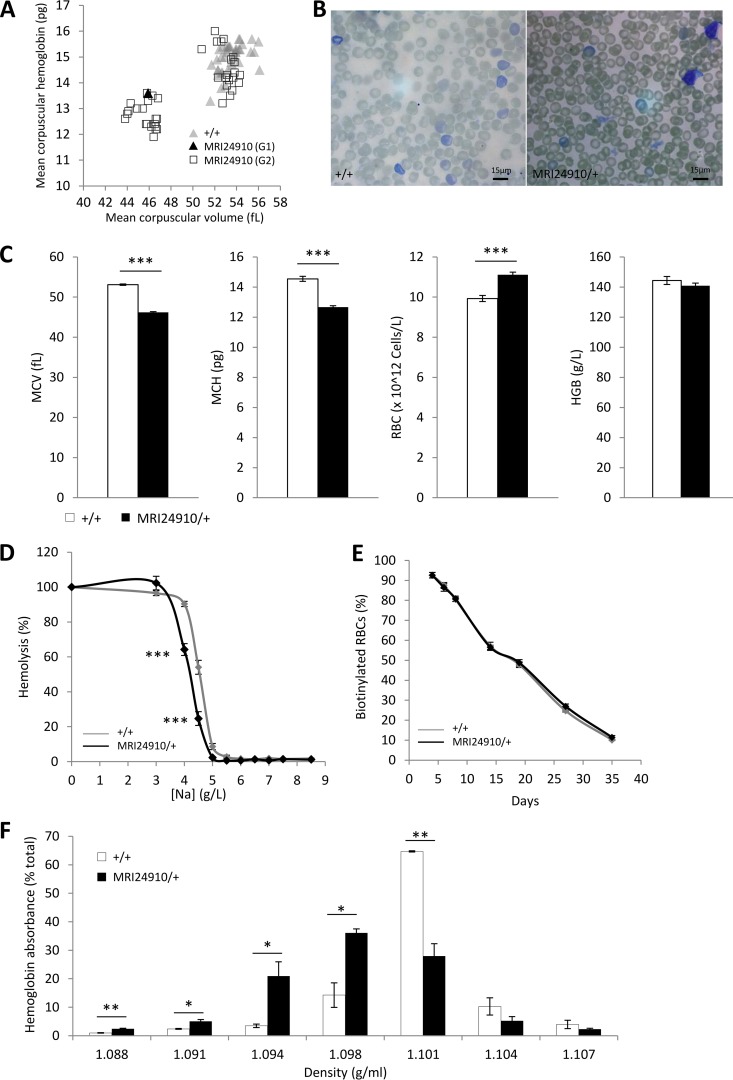FIG 1.
Hematological properties of the MRI24910 mutant line. (A) Blood parameters measured in ENU-mutagenized offspring, including the G1 mouse MRI24910, and G2 offspring. G2 mice exist in two populations, at a Mendelian ratio of 1:1. Mice were assumed to be carrying the mutation if their MCV was <48 fl and are referred to as MRI24910/+ or mutant mice, while mice with MCVs of >48 fl are referred to as wild type (+/+). (B) Giemsa-stained blood smears of wild-type and mutant mice. (C) Hematological parameters from automated blood counts. MCV, mean corpuscular volume; MCH, mean corpuscular hemoglobin; RBC, erythrocyte count; HGB, total hemoglobin by blood volume. (D) Osmotic fragility of erythrocytes based on hemolysis in salt solutions. (E) Erythrocyte half-lives, based on the percentage of biotinylated cells remaining in circulation after an initial biotin injection that labeled >99% of erythrocytes. (F) Quantification of the relative number of erythrocytes, based on hemoglobin absorbance, in each density layer of a discontinuous Percoll gradient. Error bars indicate standard errors of the means (SEM). *, P < 0.05; **, P < 0.01; ***, P < 0.001. Data are from four experiments with a total of 20 mice per group for the automated blood counts. Data are from one experiment with 7 to 9 mice per group for the osmotic fragility test and with 4 mice per group for the erythrocyte half-life and density measurements.

